The first three months of a calf’s life are crucial, as this key time in their early life has a huge impact on their future health, growth and performance.
There are a number of different housing systems available for calves but they must all provide the basic requirements.
It is important to consider the following criteria when converting existing houses into suitable calf accommodation. The five qualities that are essential for a good calf house are:
Sheds need to be well ventilated with clean, fresh air that is well distributed. Ideally sheds should be perpendicular to the prevailing wind as calf houses are dependent on the wind blowing outside the shed to drive natural ventilation.
Good ventilation removes stale, damp air which is essential in preventing respiratory and other diseases. The location of the calf houses relative to the location of older stock, impacts the likelihood of cross infection between batches of animals of different ages. Cobwebs and condensation on the underside of roofing are signs of poor ventilation.
The minimum air outlet required for younger calves, up to 100kg bodyweight, is 0.04m2 per calf. Outlets are ideally in the roof ridge, but any potential aperture in the roof such as skylights or chimneys can be used or adapted. The slope of the roof should have a pitch of 15° to 22°. A higher pitch is better for ventilation. Air inlets should be two to four times the size of the outlet and they should be divided equally across the two long walls (with the air coming from outside ideally). Once the area of inlets has been calculated, then the cladding material can be chosen. Many calf houses can be improved by modifying the sidewall cladding to get the most benefit from the wind, without losing control of the airspeed inside the building. A suitable cladding used for retrofitting an existing house is Yorkshire boarding. This is a double-row, 152mm x 25mm board with 25mm gaps in between (offset from each other to create a barrier to rain). The separation between the two rows of boards is equal to the gap between each board. Standard space boarding is not always effective because it does not eliminate wind-driven rain or reduce higher wind speeds.Mechanical ventilation (positive pressure tube ventilation or PPTV) systems are now being fitted to some houses. These work where fresh air is blown in through plastic or polythene tubes with carefully placed ventilation holes which are calculated bespoke to the shed by a trained specialist in PPTV. While fresh air is essential it is important to avoid draughts at calf level.
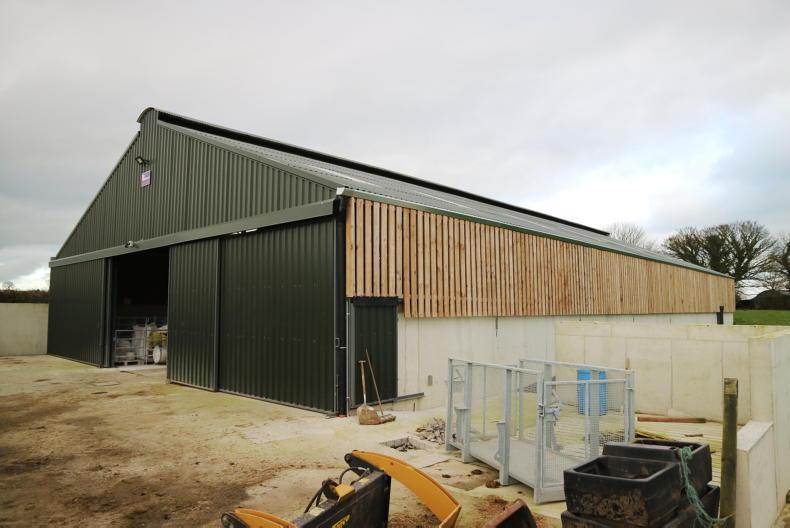
A draught is air speed of > 0.5m/s at calf level. Avoid air inlets, including open doors, that can cause draught at calf level. If parts of the door are needed to provide air inlet in the short term, consider cladding the top half of the door with ventilated sheet of a Galebreaker-type product.
The optimal air temperature for calves under three weeks old is 15-20°C. This is difficult to achieve in Ireland from January to April.
By one month of age, a healthy calf can withstand temperatures around freezing point.
Calves require plenty of straw bedding, deep enough for them to ‘nest’ in so that when they are lying down it covers their hocks. Only the best-quality straw should be used in the calf house.
Using calf jackets for the first 30 days can be beneficial, but before investing in these products, ensure calves are receiving sufficient energy from milk feeding and have dry bedding to keep them warm.
Jackets should be water resistant, made from a breathable material, have adjustable straps and they must be washed between calves. Their removal depends on the weather forecast and individual calf condition and appetite.
Quartz linear heaters are useful for group pens and especially sick pens as they only heat the surfaces that are within range (and not the air) while infrared bulbs are suitable for individual pens.
If the environment is wet it allows pathogens to survive and spread more easily and reduces the shed temperature. Control of moisture in a calf shed requires good drainage and effective ventilation.
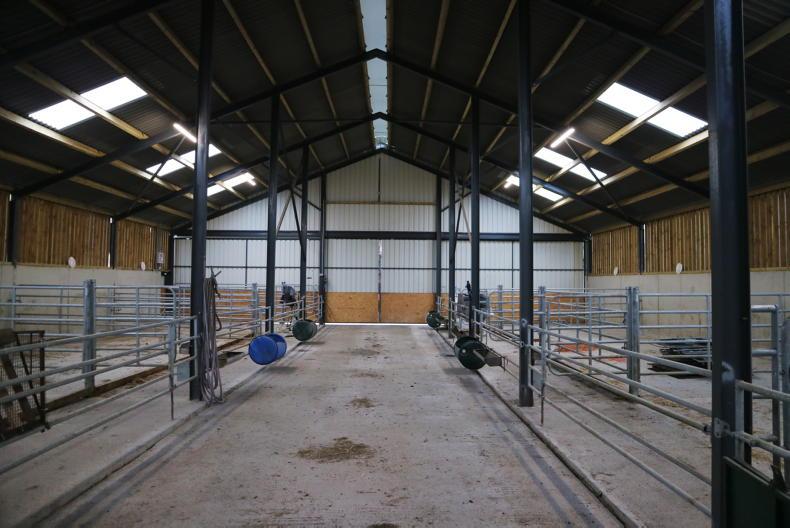
Concrete floors should be smooth, without cracks or potholes, and have a slope of 1 in 20 from the back of the pen to the front, running into drains that should have ideally a slope of 1 in 60.
It is recommended that the drains carrying effluent are made of smooth pipes/drains to facilitate the rapid discharge of effluent from the house.
New concrete should have a brush finish to prevent slipping.
A good routine should be in place for cleaning calf feeding utensils and buckets. A separate area is required for cleaning and preparation of milk feeds, as both activities create a lot of moisture.
Good hygiene is very important, as a calf’s immune system is not fully developed and as a result they are more susceptible to picking up infections from poor conditions.
All components of the housing system, eg floor, drains, walls, feeders and drinkers, must be cleanable and easy to clean.
Repair impossible-to-clean surfaces by applying new render to walls to at least above animal height, use epoxy resins paints on relatively smooth surfaces.
A deep clean annually, or after a period of poor health and performance, is an essential part of the hygiene routine.
Having the correct floor slope makes it easier to keep sheds clean. Ensure drinkers are not leaking and are situated at the front of the pens for easy cleaning.
Calves should always have access to fresh clean water, even when on milk. Drinking water increases starter intake and rumen development. Having a separate pen for sick calves is also important.
Calf housing doesn’t have to be elaborate to be effective and even the best facilities will not succeed without proper management.
The first three months of a calf’s life are crucial, as this key time in their early life has a huge impact on their future health, growth and performance.
There are a number of different housing systems available for calves but they must all provide the basic requirements.
It is important to consider the following criteria when converting existing houses into suitable calf accommodation. The five qualities that are essential for a good calf house are:
Sheds need to be well ventilated with clean, fresh air that is well distributed. Ideally sheds should be perpendicular to the prevailing wind as calf houses are dependent on the wind blowing outside the shed to drive natural ventilation.
Good ventilation removes stale, damp air which is essential in preventing respiratory and other diseases. The location of the calf houses relative to the location of older stock, impacts the likelihood of cross infection between batches of animals of different ages. Cobwebs and condensation on the underside of roofing are signs of poor ventilation.
The minimum air outlet required for younger calves, up to 100kg bodyweight, is 0.04m2 per calf. Outlets are ideally in the roof ridge, but any potential aperture in the roof such as skylights or chimneys can be used or adapted. The slope of the roof should have a pitch of 15° to 22°. A higher pitch is better for ventilation. Air inlets should be two to four times the size of the outlet and they should be divided equally across the two long walls (with the air coming from outside ideally). Once the area of inlets has been calculated, then the cladding material can be chosen. Many calf houses can be improved by modifying the sidewall cladding to get the most benefit from the wind, without losing control of the airspeed inside the building. A suitable cladding used for retrofitting an existing house is Yorkshire boarding. This is a double-row, 152mm x 25mm board with 25mm gaps in between (offset from each other to create a barrier to rain). The separation between the two rows of boards is equal to the gap between each board. Standard space boarding is not always effective because it does not eliminate wind-driven rain or reduce higher wind speeds.Mechanical ventilation (positive pressure tube ventilation or PPTV) systems are now being fitted to some houses. These work where fresh air is blown in through plastic or polythene tubes with carefully placed ventilation holes which are calculated bespoke to the shed by a trained specialist in PPTV. While fresh air is essential it is important to avoid draughts at calf level.

A draught is air speed of > 0.5m/s at calf level. Avoid air inlets, including open doors, that can cause draught at calf level. If parts of the door are needed to provide air inlet in the short term, consider cladding the top half of the door with ventilated sheet of a Galebreaker-type product.
The optimal air temperature for calves under three weeks old is 15-20°C. This is difficult to achieve in Ireland from January to April.
By one month of age, a healthy calf can withstand temperatures around freezing point.
Calves require plenty of straw bedding, deep enough for them to ‘nest’ in so that when they are lying down it covers their hocks. Only the best-quality straw should be used in the calf house.
Using calf jackets for the first 30 days can be beneficial, but before investing in these products, ensure calves are receiving sufficient energy from milk feeding and have dry bedding to keep them warm.
Jackets should be water resistant, made from a breathable material, have adjustable straps and they must be washed between calves. Their removal depends on the weather forecast and individual calf condition and appetite.
Quartz linear heaters are useful for group pens and especially sick pens as they only heat the surfaces that are within range (and not the air) while infrared bulbs are suitable for individual pens.
If the environment is wet it allows pathogens to survive and spread more easily and reduces the shed temperature. Control of moisture in a calf shed requires good drainage and effective ventilation.

Concrete floors should be smooth, without cracks or potholes, and have a slope of 1 in 20 from the back of the pen to the front, running into drains that should have ideally a slope of 1 in 60.
It is recommended that the drains carrying effluent are made of smooth pipes/drains to facilitate the rapid discharge of effluent from the house.
New concrete should have a brush finish to prevent slipping.
A good routine should be in place for cleaning calf feeding utensils and buckets. A separate area is required for cleaning and preparation of milk feeds, as both activities create a lot of moisture.
Good hygiene is very important, as a calf’s immune system is not fully developed and as a result they are more susceptible to picking up infections from poor conditions.
All components of the housing system, eg floor, drains, walls, feeders and drinkers, must be cleanable and easy to clean.
Repair impossible-to-clean surfaces by applying new render to walls to at least above animal height, use epoxy resins paints on relatively smooth surfaces.
A deep clean annually, or after a period of poor health and performance, is an essential part of the hygiene routine.
Having the correct floor slope makes it easier to keep sheds clean. Ensure drinkers are not leaking and are situated at the front of the pens for easy cleaning.
Calves should always have access to fresh clean water, even when on milk. Drinking water increases starter intake and rumen development. Having a separate pen for sick calves is also important.
Calf housing doesn’t have to be elaborate to be effective and even the best facilities will not succeed without proper management.






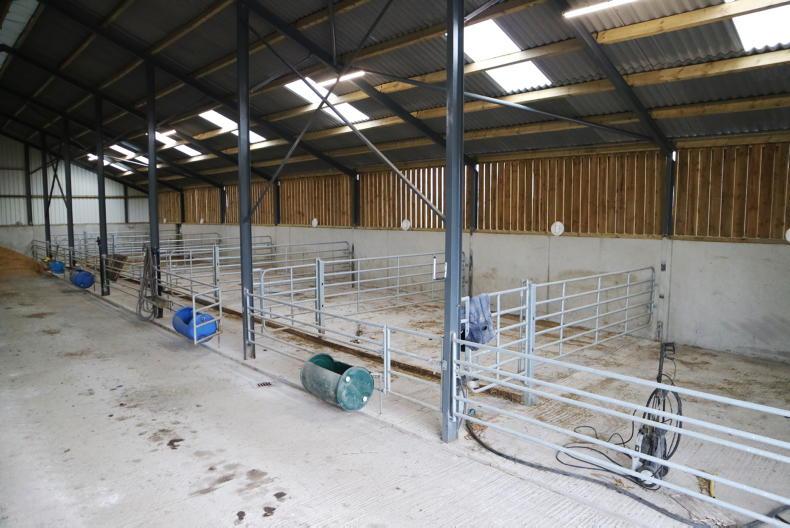
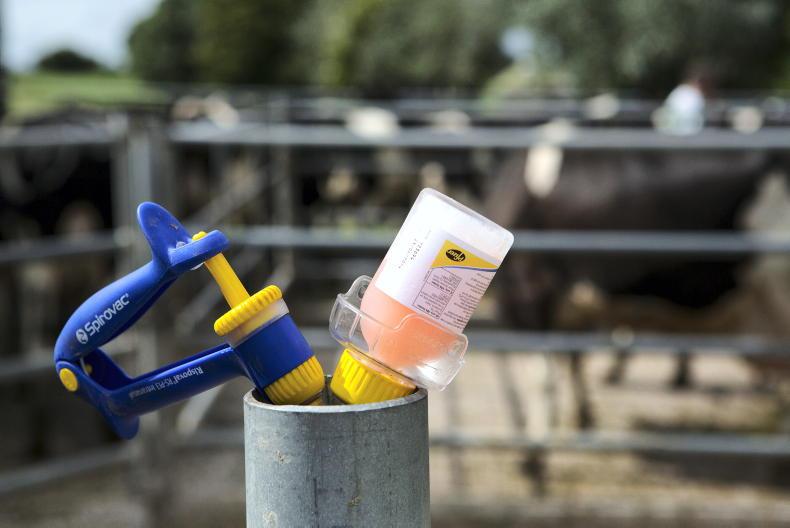
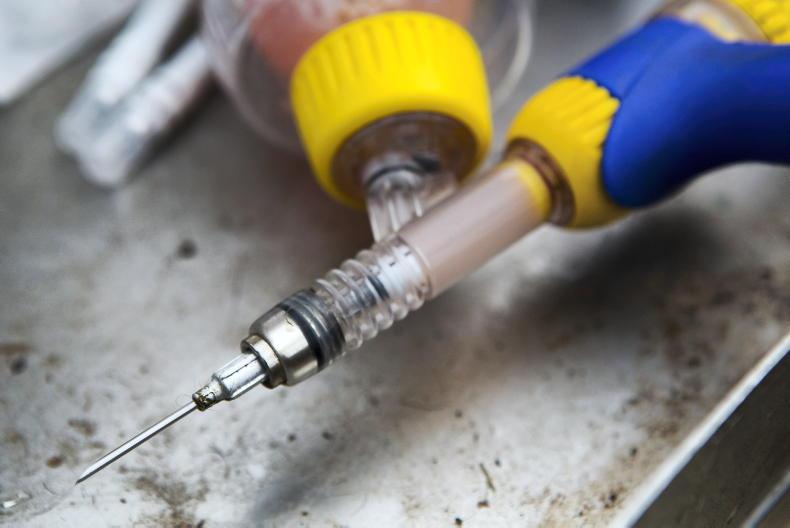

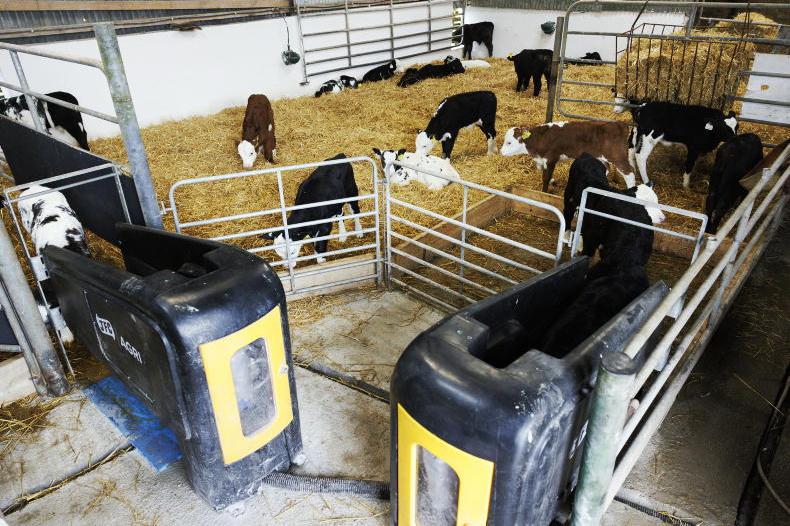
SHARING OPTIONS